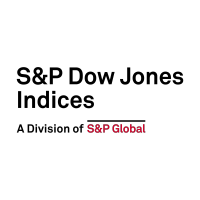Tag Archives: dashboard
A Conundrum in a Different Key
Volatility, dispersion, and correlation are elements of what we’ve elsewhere characterized as The Active Manager’s Conundrum. Active managers should prefer: Low volatility, which is typically associated with higher returns High dispersion, which means a larger payoff for correct stock selections High correlation, which reduces the opportunity cost of a concentrated portfolio The conundrum arises because…
- Categories S&P 500 & DJIA, Strategy, Thematics
- Other Tags
- Categories
- S&P 500 & DJIA, Strategy, Thematics
- Other Tags
Using Sector & Industry Indices to Uncover Opportunity
Could higher dispersion in sectors and industries translate to outperformance? S&P DJI’s Anu Ganti explores how index data can be used to inform tactical sector rotation strategies in periods of high volatility. Get the latest sector dashboard: https://spdji.com/indexology/sectors/us-sector-dashboard.
- Categories Equities
- Other Tags
Is Volatility an Investor’s Friend or Enemy?
Explore how high volatility and high dispersion can impact passive and active managers’ performance with S&P DJI’s Craig Lazzara. Get the latest Dispersion, Volatility, & Correlation dashboard: https://spdji.com/documents/commentary/dashboard-dispersion-2020-03.pdf
- Categories Equities
- Other Tags
Exploring VIX® in Volatile Markets
How can VIX data help us understand the current market environment? S&P DJI’s Tim Edwards explores what recent historical highs for VIX could mean for equity and commodity markets moving forward. Get the latest Risk & Volatility dashboard on Indexology: https://spdji.com/indexology/risk-management/risk-volatility-dashboard
- Categories Strategy
- Other Tags
Tracking The Cost of Retirement Income
One of the main risks for retirees is not having enough inflation-adjusted income in retirement to support their desired standard of living. The S&P STRIDE (S&P Shift to Retirement Income and Decumulation) Indices attempt to solve this problem by focusing explicitly on reducing the volatility of income rather than reducing the volatility of returns. In…
- Other Tags




